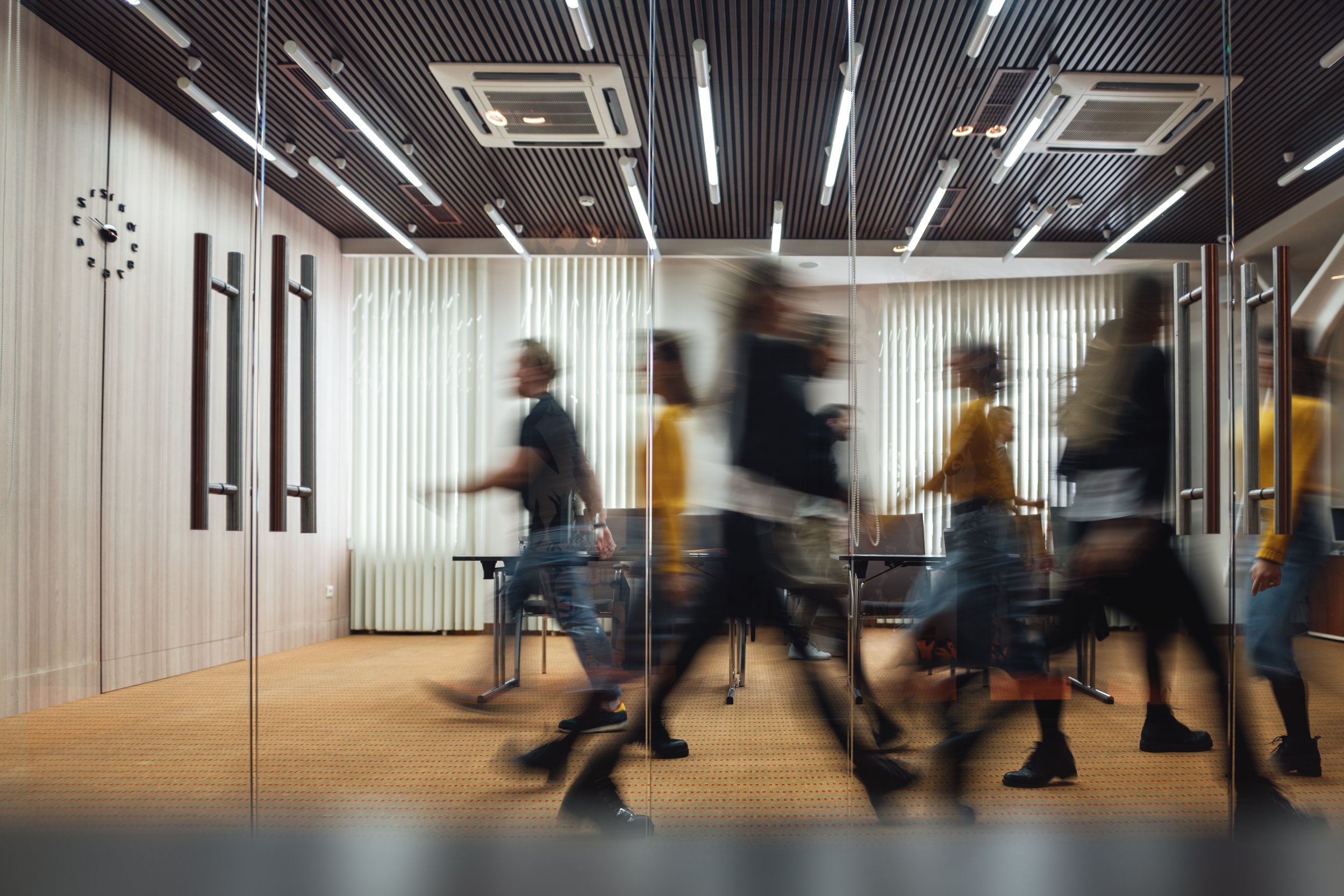FROM THE NEW YORK TIMES / BY JAMES BARRON
Bosses want employees back, but it looks like the return will be gradual and depend on the future of Covid.
Good morning, all, but especially you Goldman Sachs employees out there. You’re back at your desks today, aren’t you? That was the upshot of that memo last week, wasn’t it?
The memo said that Goldman — whose chief executive once called remote work “an aberration that we are going to correct as quickly as possible” — would no longer require Covid-19 tests of employees in New York who have approved medical or religious exemptions from the city’s vaccine mandate. Starting today, they can go in without having to undergo tests or wear face coverings. As for Goldman employees who do not have approved exemptions and aren’t vaccinated, the memo said they should continue to work remotely.
Oh, and you employees of the investment bank Jefferies? The email that you got was more explicit.
Under the subject line “more than just another rah-rah note,” your top bosses wrote that “as long as Covid remains manageable, we need everyone back in our offices on a consistent basis.” They promised not to take attendance or check “individual names on the turnstiles,” and they said they had “absolutely no issue when people need to utilize the hybrid solution.”
So Labor Day has come and gone. Now what? Bosses want employees back. But will the employees show up?
Remember last year? Many companies were betting on an almost-normal September, with large numbers of office workers returning to their desks in New York and the sputtering Midtown economy perking up again. The variants of the virus — first Delta and, later, Omicron — and the subvariants that eventually appeared dashed that.
The expectations seem more modest this time around. James Parrott, director of economic and fiscal policies at the Center for New York City Affairs at the New School, said that September could be “an inflection point.”
“But I think it’s going to be a gradual return to office,” he said. “I don’t expect to see a big surge in return to office in September. It’s going to be hard to get people back to the office on anything approaching what existed before, at least for a while.”
Office occupancy remains under 50 percent in New York. The average was 35.3 percent last week, down 2.3 percentage points from the week before and well below the national average of 45.3 percent, according to data from Kastle Systems, which makes devices that workers use to enter their workplaces. The company said the only cities above 50 percent among the 10 it checked were in Texas — Austin, Dallas and Houston.
“We might see return to office numbers start to tick slightly up from their summer levels” now that we are past Labor Day, my colleague Emma Goldberg, who covers the future of work, told me.
But she added that it would be “more of a trickle than a flood.”
“Partnership for New York’s survey in May found that just 8 percent of Manhattan office workers were back full time,” she said. “Recent research has found that people are back in the office in far greater numbers in cities that had shorter Covid lockdowns, or have predominantly car commuters — which means that New York’s return will likely be slower than that of other cities around the country.”
That was hinted at in the recent ill-boding projections from the Metropolitan Transportation Authority, which runs the subways and two commuter rail lines in New York. It says it is facing a $2.5 billion budget deficit for 2025 and that ridership might reach only 80 percent of pre-pandemic levels the year after that.
Back to the Jefferies memo for a moment. It gave this reason for returning to the office: “We need our seniors in so we can have motivated and impactful juniors.”
Bosses talk about the need to pass along experience. “I know how much I learned from being in an office as a junior employee,” said Monica Swinney, the chief operating officer at Lex Markets, a commercial real estate securities marketplace. “It’s stuff that happens organically that you can’t plan for. It’s realizing you’re stuck on something when someone walks by and realizes you’re stuck before you do.”
Even so, she said that “it’s going to take longer” than this week “before people come to terms with whether we go back to work.”
“It may take six months, it may take a year, but junior people will start to see the benefits of being there in person,” she said.
The Jefferies memo also contained a key clause: “as long as Covid remains manageable.”
That’s something that has fazed us all in the two and a half years since “Covid” became part of our collective vocabulary and uncertainty became part of daily life. Is Covid manageable?
The daily average of cases in New York State was 4,208 on Sunday, down 15 percent from two weeks ago. But that is almost two and a half times the daily average reported on March 13, when the Omicron wave bottomed out. In New York City, the daily average was 2,103, down 21 percent from two weeks before — but 200 more than on March 5, when the daily average was at its lowest. And the city had four times the number of hospitalized Covid-19 patients last week as during the week of March 25 through 31, the city’s lowest week so far this year.

